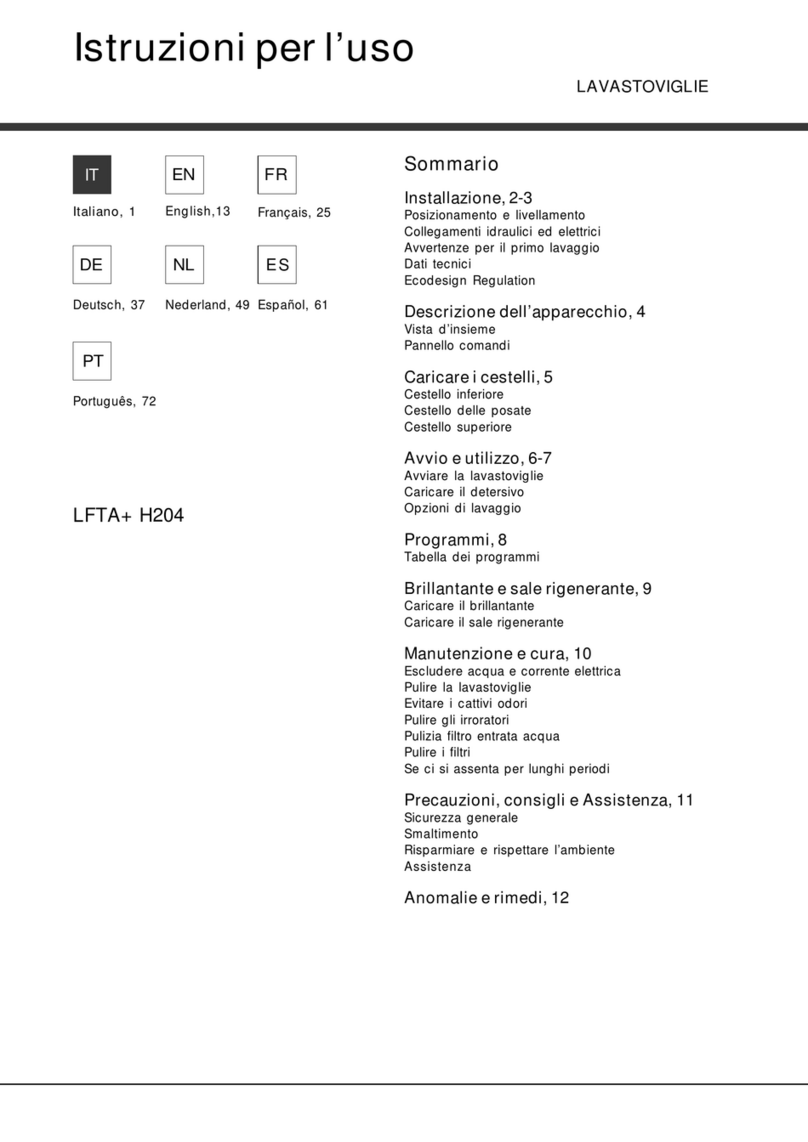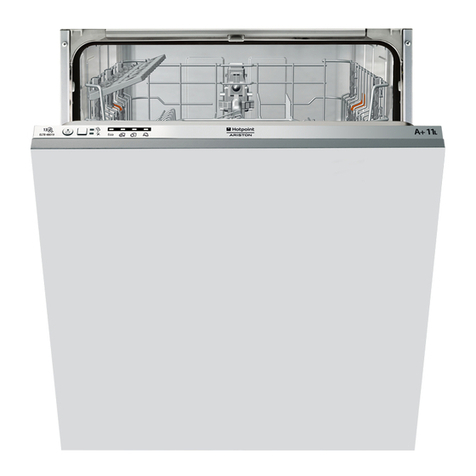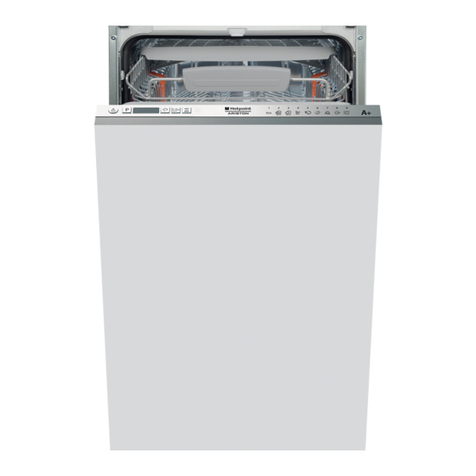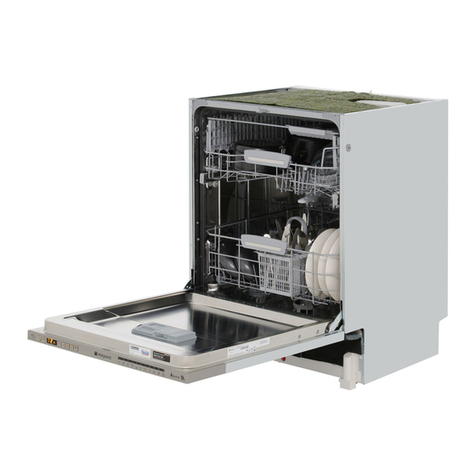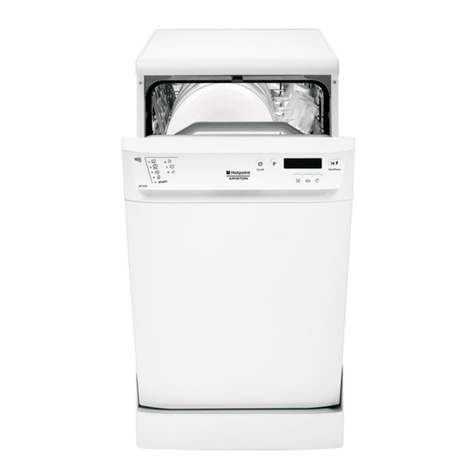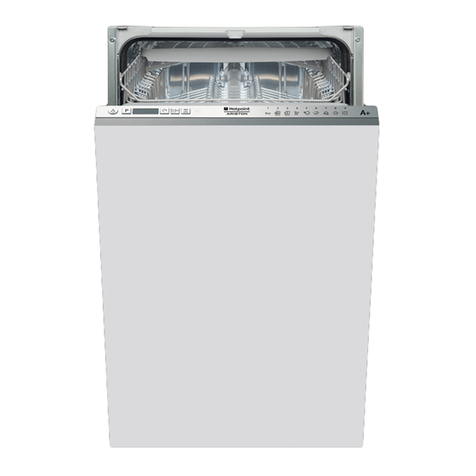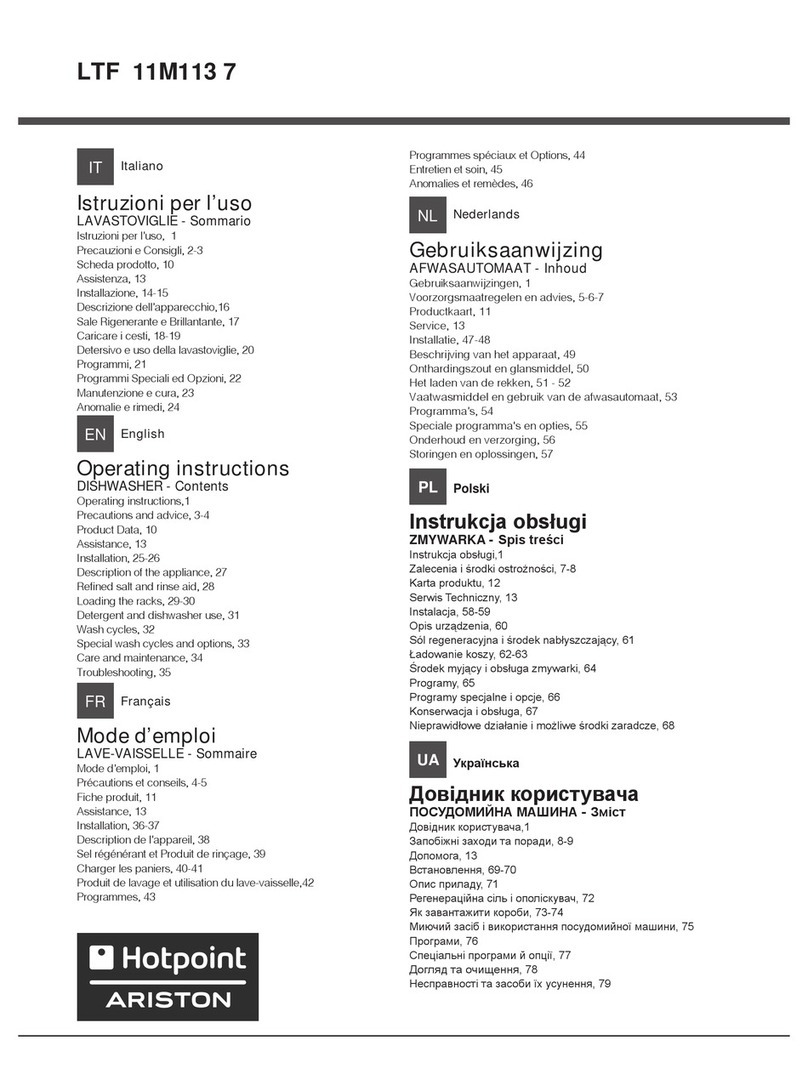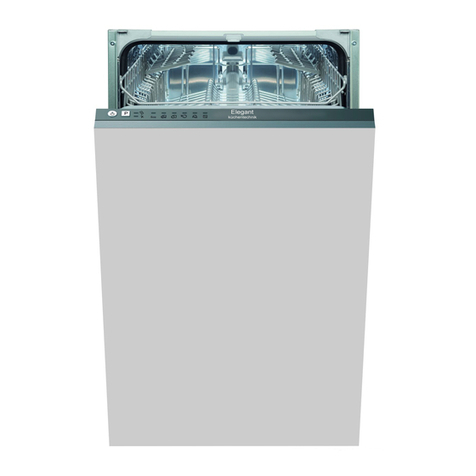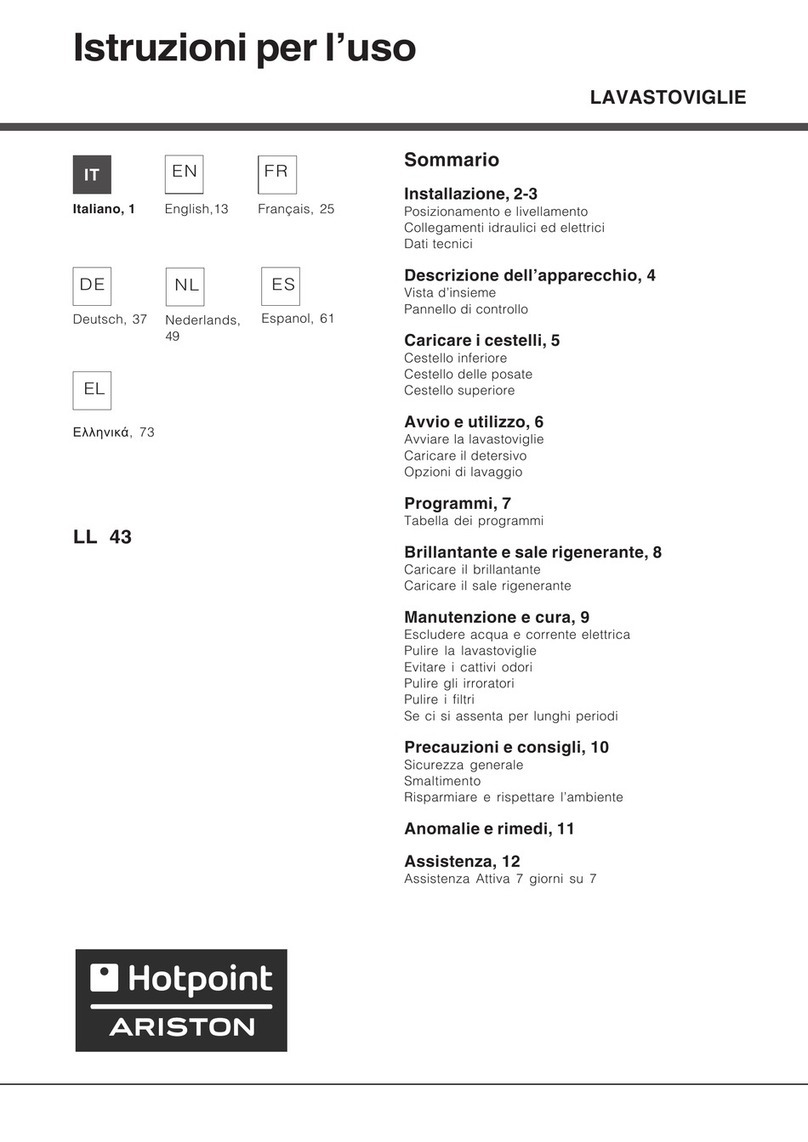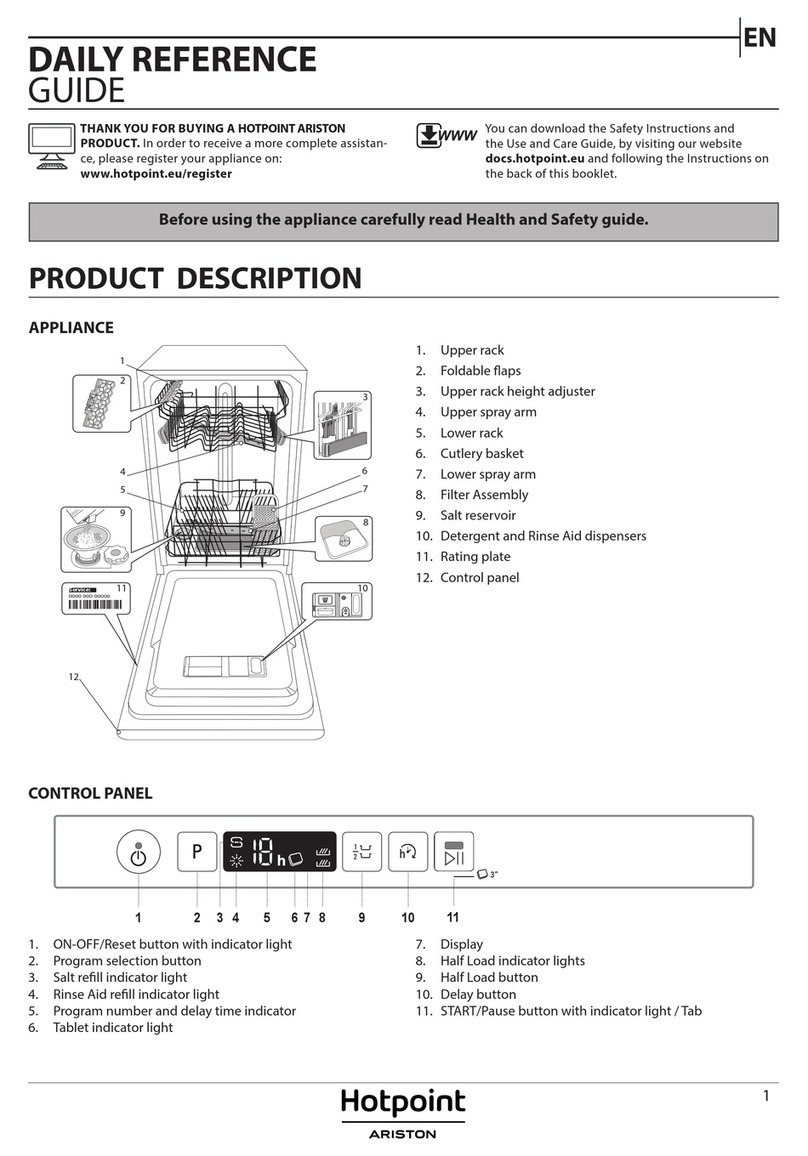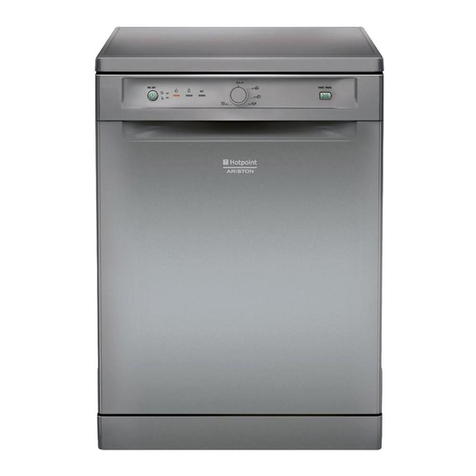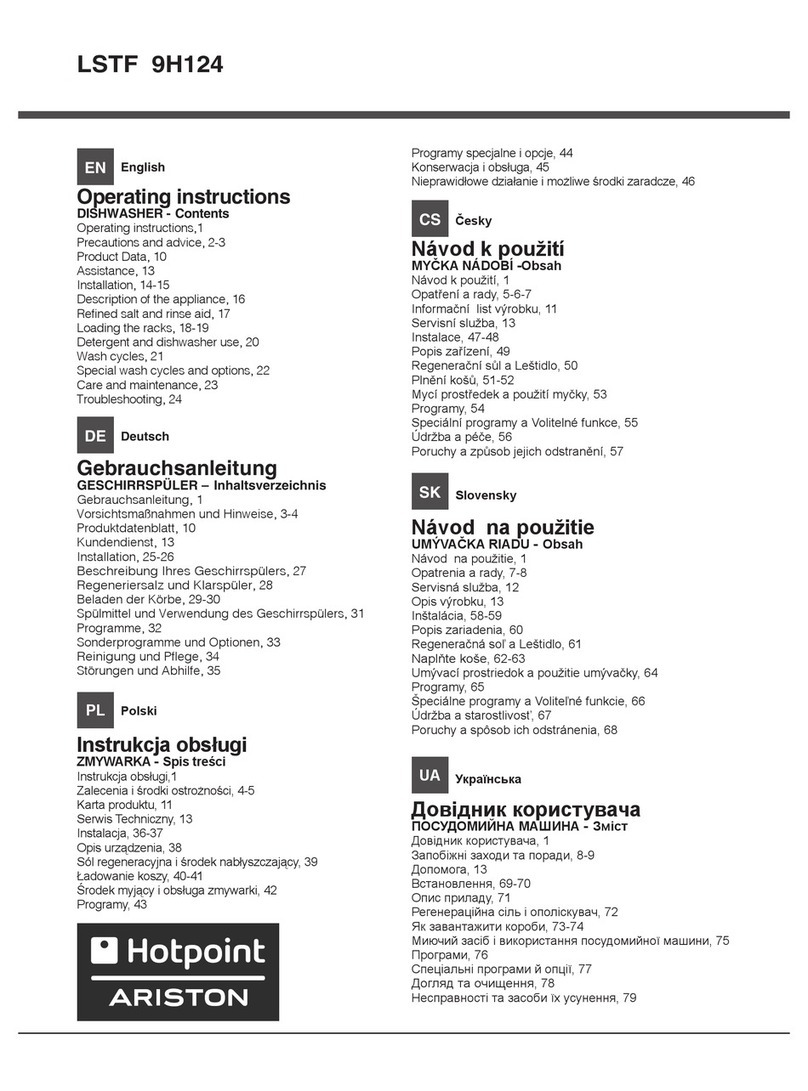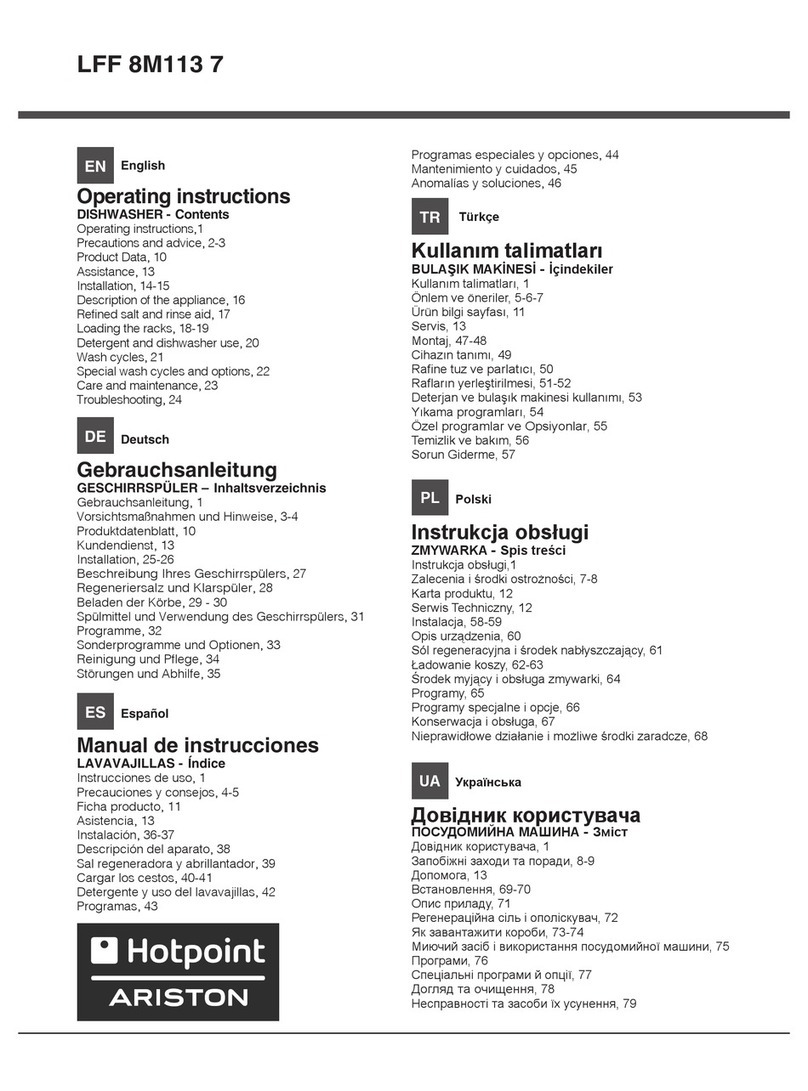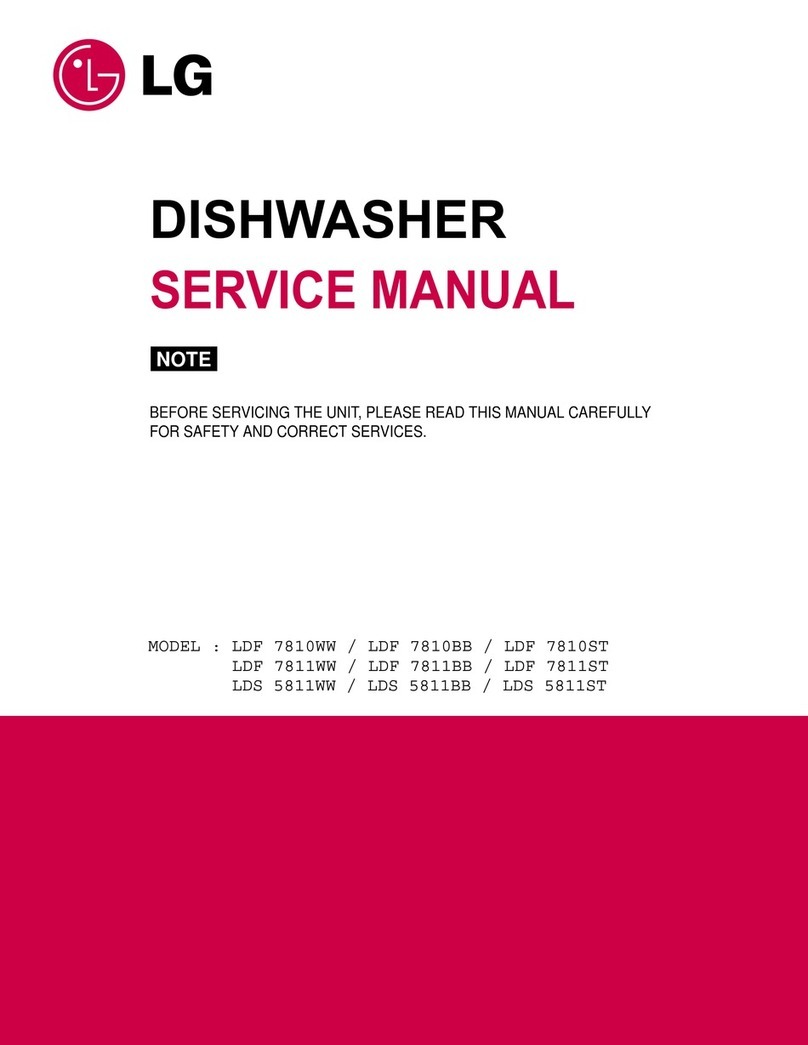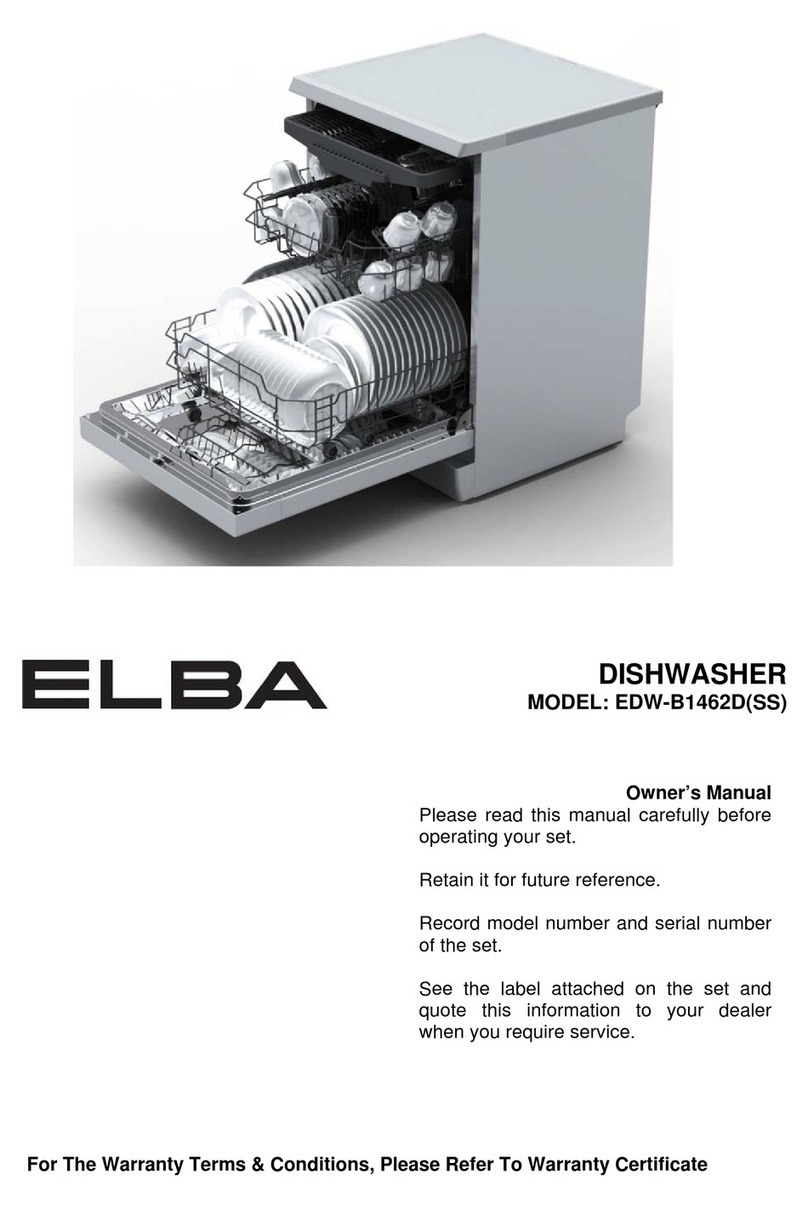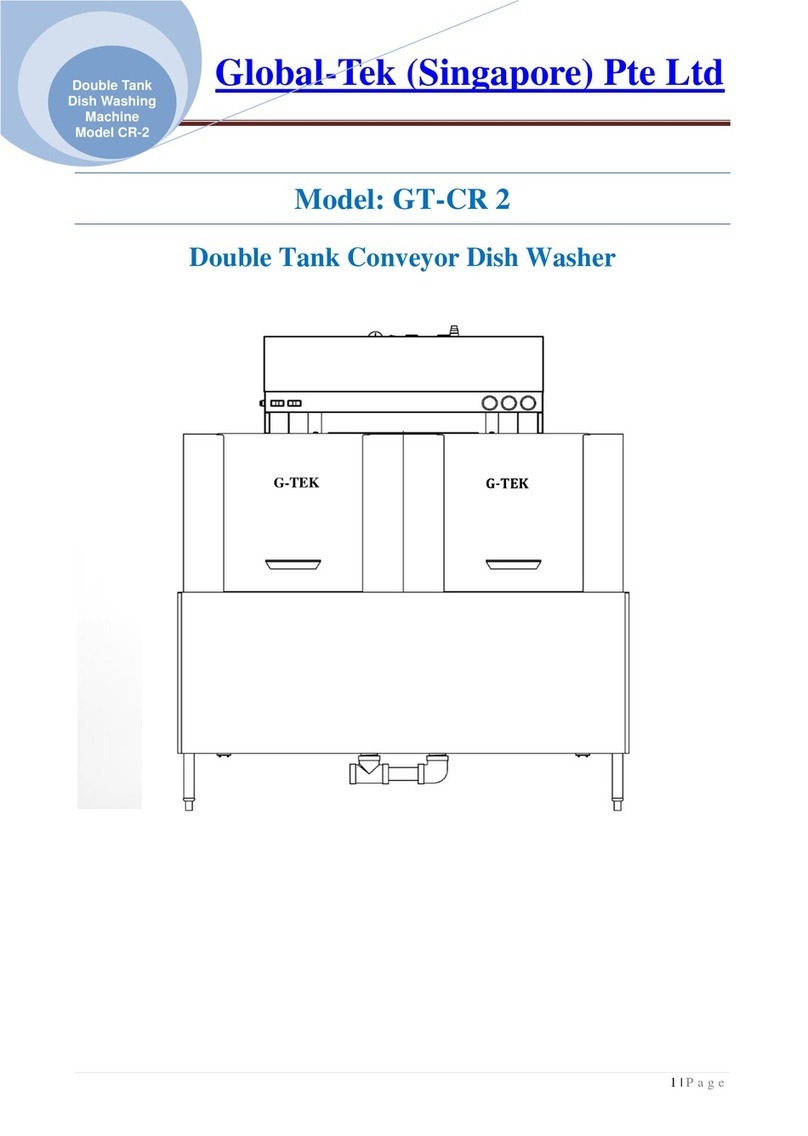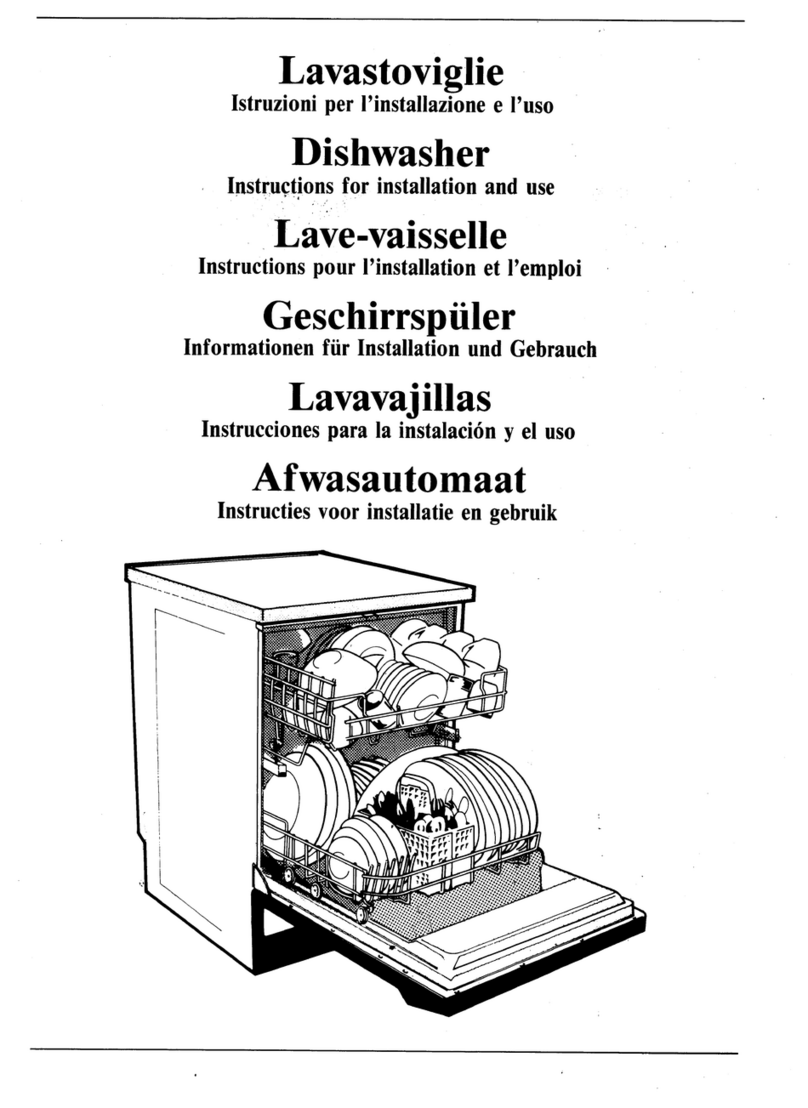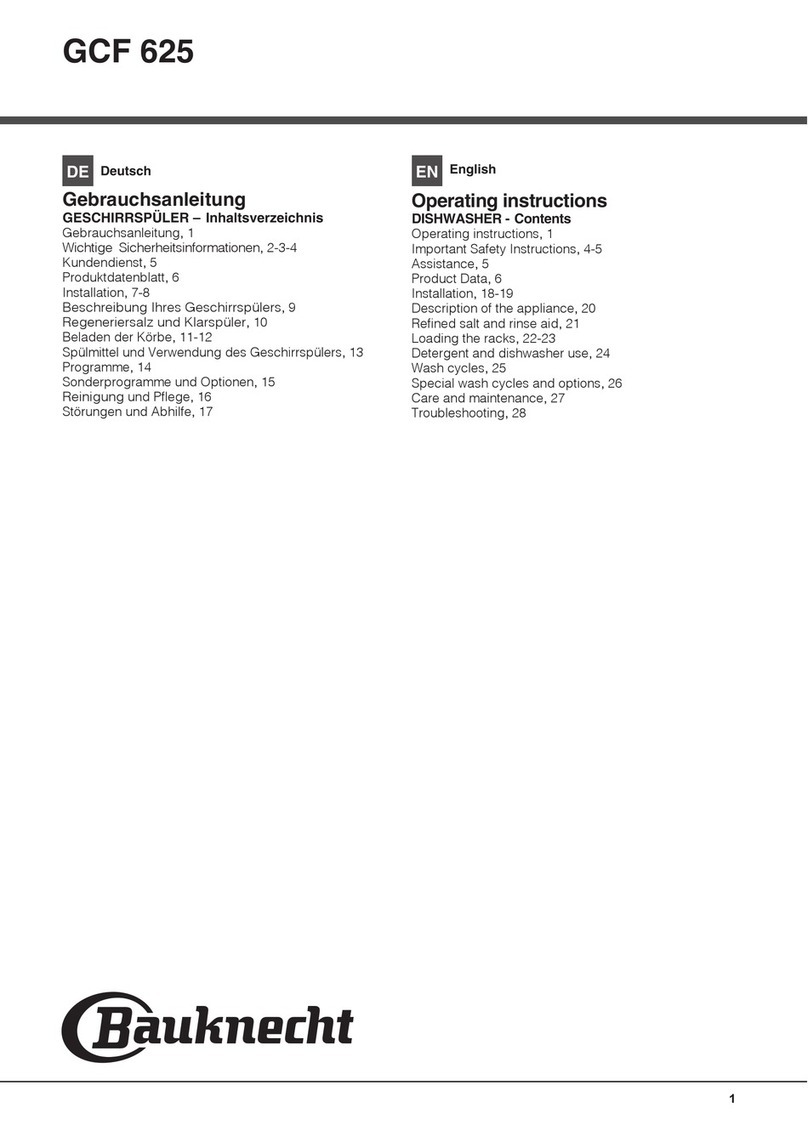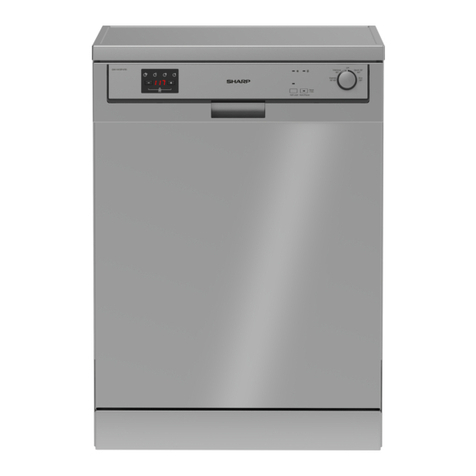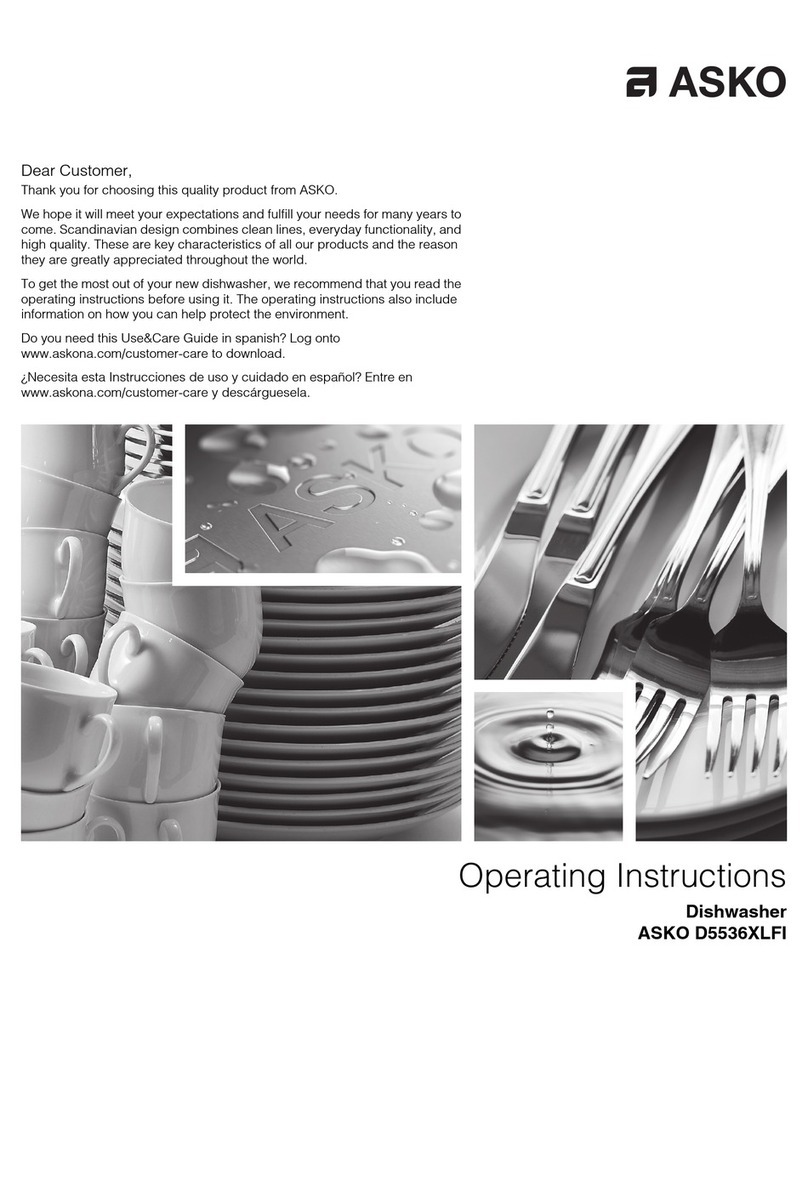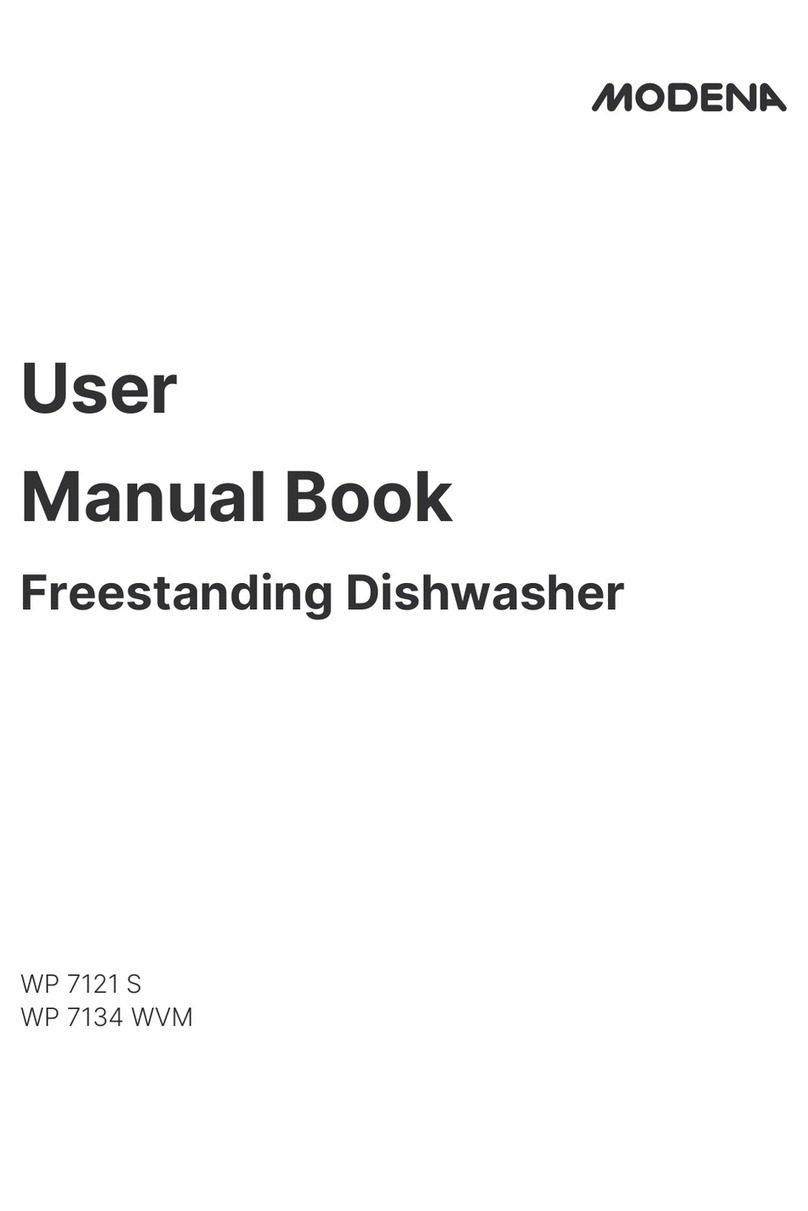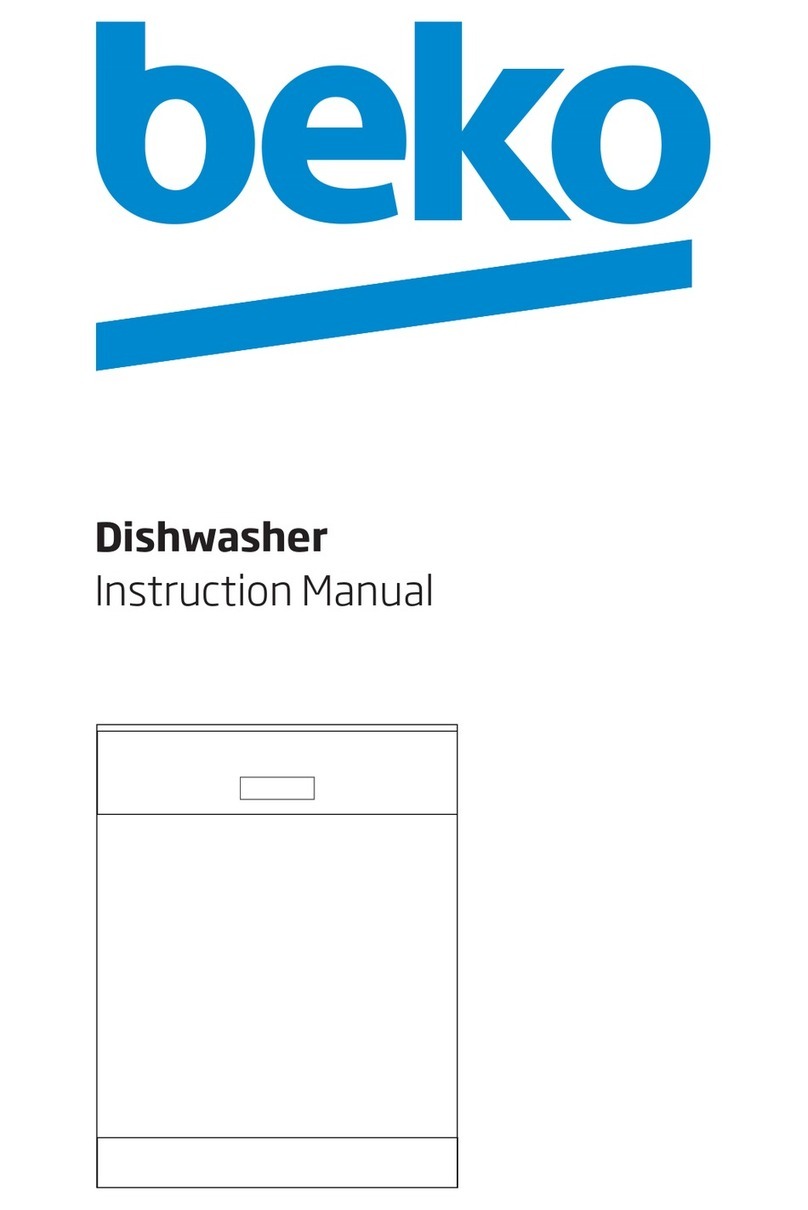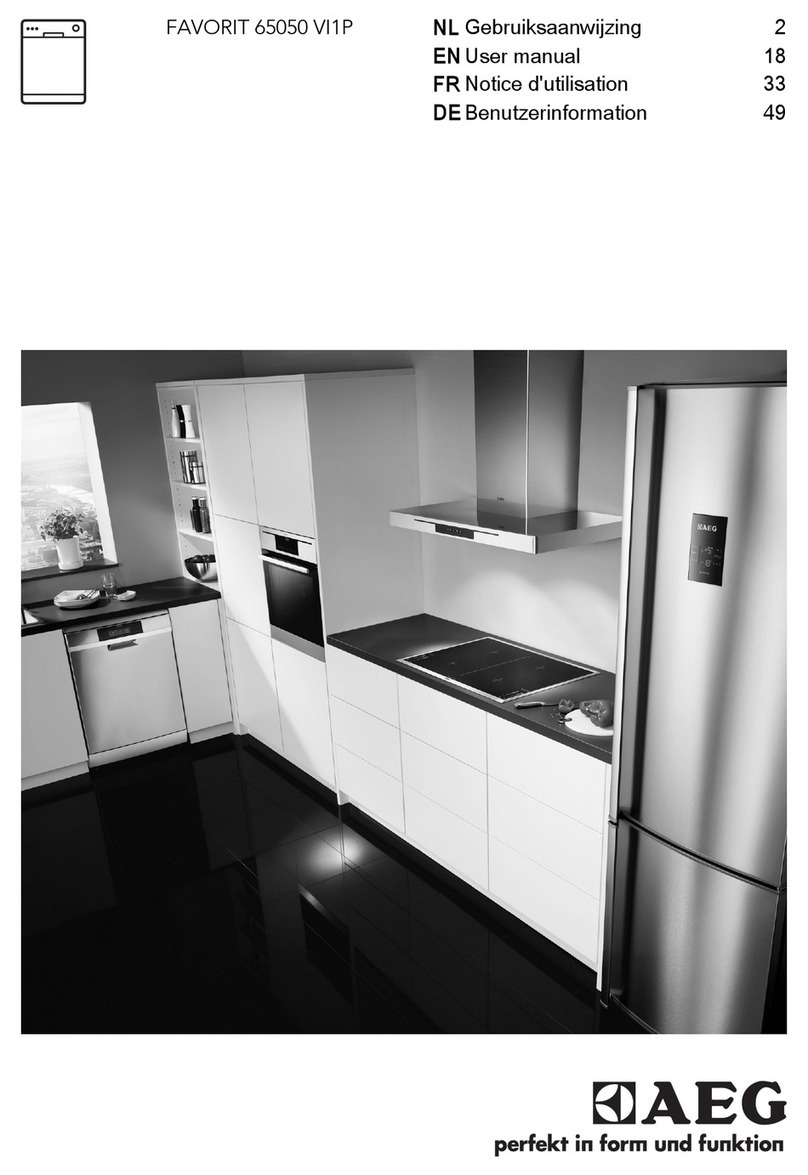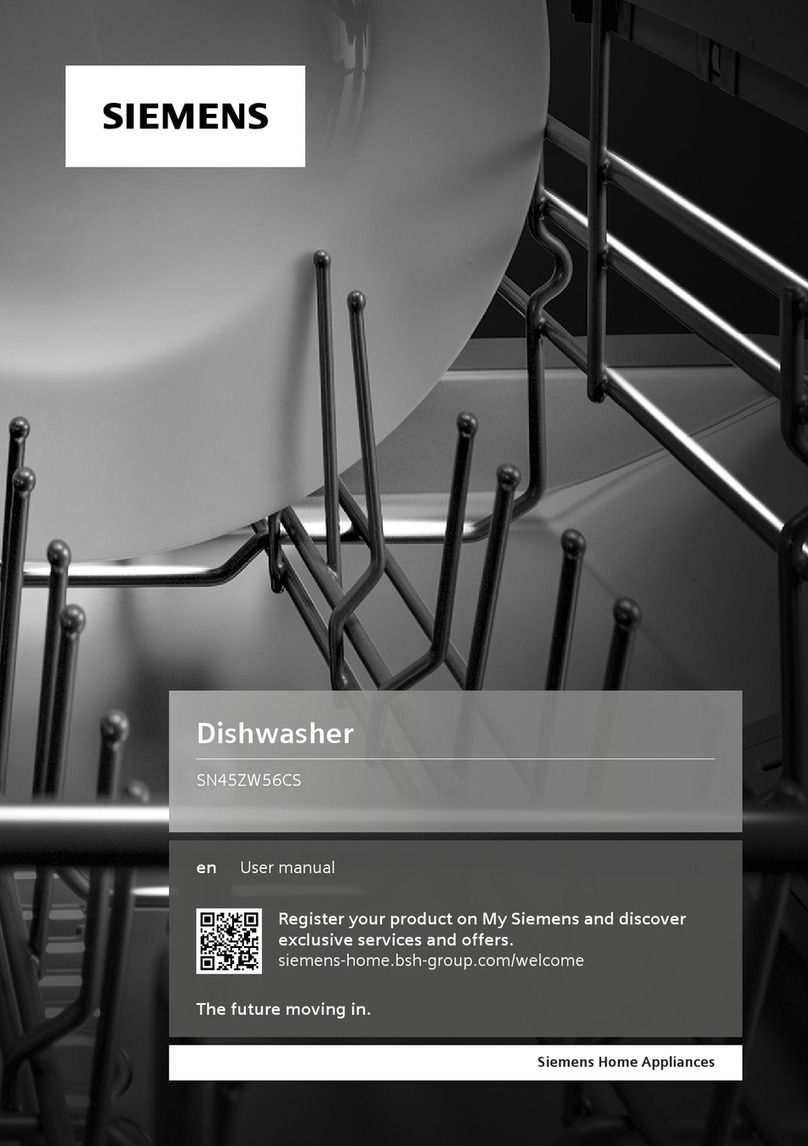10
EN The appliance was designed and manufactured
in compliance with current international safety
standards. The following information has been
provided for safety reasons and should therefore be
read carefully.
General safety
• The appliance was designed for domestic use
inside the home and is not intended for
commercial or industrial use.
• The appliance must be used by adults only, to
wash domestic crockery according to the
instructions in this manual.
• The appliance must not be installed outdoors,
even in covered areas. It is extremely dangerous
to leave the machine exposed to rain and storms.
• Do not touch the appliance when barefoot.
• When unplugging the appliance always pull the
plug from the mains socket, do not pull on the
cable.
• The water supply tap must be shut off and the
plug should be removed from the electrical
socket before cleaning the appliance or carrying
out any maintenance work.
• If the appliance breaks down, do not under any
circumstances touch the internal parts in an
attempt to carry out the repair work yourself.
• Never touch the heating element.
• Do not lean or sit on the open door of the
appliance: this may cause the appliance to
overturn.
• The door should not be left open as it may create
a dangerous obstacle.
• Keep detergent and rinse aid out of reach of
children.
• The packaging material should not be used as a
toy: it can become a choking or suffocation
hazard.
Disposal of old electrical appliances
The European Directive 2002/96/EC on Waste
Electrical and Electronic Equipment (WEEE),
requires that old household electrical appliances
must not be disposed of in the normal unsorted
municipal waste stream. Old appliances must be
collected separately in order to optimise the
recovery and recycling of the materials they contain
and reduce the impact on human health and the
environment. The crossed out "wheeled bin" symbol
on the product reminds you of your obligation, that
when you dispose of the appliance it must be
separately collected.
Consumers should contact their local authority or
retailer for information concerning the correct
disposal of their old appliance.
Saving energy and respecting the
environment
Saving water and energy
• Only start a wash cycle when the dishwasher is
full. While waiting for the dishwasher to be filled,
prevent unpleasant odours with the Soak cycle
(
see Wash Cycles
).
• Select a wash cycle that is suited to the type of
crockery and to the soil level of the crockery
using the
Wash cycle table
:
- for dishes with a normal soil level, use the Eco
wash cycle, which guarantees low energy and
water consumption levels.
- if the load is smaller than usual activate the Half
load option (
see Start-up and use
).
• If your electricity supply contract gives details of
electricity saving time bands, run wash cycles
during the periods when a lower tariff is applied.
The Delayed start* button (
see Start-up and use
)
helps you organise the wash cycles accordingly.
Phosphate-free and chlorine-free detergents
containing enzymes
• We strongly recommend that you use detergents
that do not contain phosphates or chlorine, as
these products are harmful to the environment.
• Enzymes provide a particularly effective action at
temperatures around 50°C, and as a result
detergents containing enzymes can be used in
conjunction with low-temperature wash cycles in
order to achieve the same results as a normal
65°C wash cycle.
• To avoid wasting detergent, use the product in
appropriate quantities based on the
manufacturer’s recommendations, the hardness
of the water and the soil level and quantity of the
crockery. Even if they are biodegradable,
detergents contain substances that may alter the
balance of nature.
* Only available in selected models.
Precautions and advice
